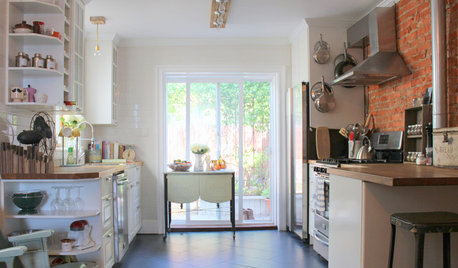'Green Manure' between tree rows?
milehighgirl
14 years ago
Related Stories

GARDENING AND LANDSCAPINGOld School Green Design: Keep the Trees!
Trees in the landscape add a sense of place, connection to nature, shade — and great beauty
Full Story
HOUZZ TOURSMy Houzz: DIY Efforts Transform a South Philly Row House
Elbow grease and creative thinking take an early-1900s home in Pennsylvania into the realm of knockout style
Full Story
THE ART OF ARCHITECTUREWorld of Design: Trees Bring Nature to a High-Rise in Milan
Discover ‘the most beautiful and innovative skyscraper in the world’ — the foliage-filled Bosco Verticale — and tour one of its apartments
Full Story
HOLIDAYSChristmas Tree Decorating the Painless Way
Holidays are for carols, not cussing. Make tree trimming less work and more fun with this guide at your side
Full Story
HOLIDAYSHow to Care for Your Christmas Tree
Keep your tree looking lush until the last ornament is packed away with these tips for watering, using stands and more
Full Story
GARDENING GUIDESHow to Keep Your Citrus Trees Well Fed and Healthy
Ripe for some citrus fertilizer know-how? This mini guide will help your lemon, orange and grapefruit trees flourish
Full Story
SPRING GARDENING7 Spectacular and Practical Spring-Flowering Trees
Put on a beauteous show in the garden with a landscape tree awash in flowers — just do your homework first
Full Story
SIDE YARD IDEASNarrow Trees for Tight Garden Spaces
Boost interest in a side yard or another space-challenged area with the fragrance and color of these columnar trees
Full Story
ARBOR DAY8 Reasons to Plant a Great Tree
Beauty is its own reward, but the benefits of planting the right tree in the right place go way beyond looks
Full StorySponsored
Central Ohio's Trusted Home Remodeler Specializing in Kitchens & Baths
More Discussions









jellyman
alan haigh
Related Professionals
Brentwood Landscape Contractors · Norwood Landscape Contractors · College Park Landscape Contractors · Costa Mesa Landscape Contractors · Forest Hills Landscape Contractors · Las Vegas Landscape Contractors · Mastic Beach Landscape Contractors · Norristown Landscape Contractors · Parker Landscape Contractors · St. Louis Landscape Contractors · Tamarac Landscape Contractors · Tigard Landscape Contractors · Webster Groves Landscape Contractors · Four Corners Landscape Contractors · Greenfield Landscape ContractorsmilehighgirlOriginal Author
alan haigh
milehighgirlOriginal Author
jolj
alan haigh
chuck60
alan haigh